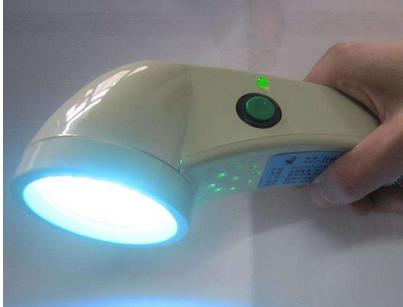What is the Principle of Treating Vitiligo in Phototherapy
 The phototherapy has a definite therapy to treat vitiligo, It is the first choice to treat this disease in China. The mechanism to treat vitiligo is directly to promote the proliferation and differentiation of melanin stem cells remained at skin lesions area. It will achieve the purpose of melanin recovery at the affected area and induce apoptosis of T cells. So that it will decrease the production of autoantibody and effectively inhibit the recurrence of vitiligo. In addition, it will produce the heat effects and biological stimulation on the affected areas skin. It will effectively improve the local microcirculation, promote the metabolic rate, and color restored process. It will make the melancytes island integrate with the normal skin.
The phototherapy has a definite therapy to treat vitiligo, It is the first choice to treat this disease in China. The mechanism to treat vitiligo is directly to promote the proliferation and differentiation of melanin stem cells remained at skin lesions area. It will achieve the purpose of melanin recovery at the affected area and induce apoptosis of T cells. So that it will decrease the production of autoantibody and effectively inhibit the recurrence of vitiligo. In addition, it will produce the heat effects and biological stimulation on the affected areas skin. It will effectively improve the local microcirculation, promote the metabolic rate, and color restored process. It will make the melancytes island integrate with the normal skin.
What is the side effect of the phototherapy?
Because the patients need to take oral photosensitizer before PUVA therapy, so they need avoid sunlight after the therapy. In addition the patients may feel discomfort of the gastric intestine and eyes beside the itchiness and erythema reaction at vitiligo area. The patients will not feel uncomfortable for their body system under the NBUVB, 308nm, 304nm optical therapies besides some local skin reaction. Such as the local erythema, blister, slight pain etc. But all these symptoms can control effectively by adjusting dosage.
Apart from the phototherapy, we also use the traditional Chinese medicine to treat this disease. However what are the advantages for traditional Chinese medicine to treat vitiligo?
The traditional Chinese medical have a long history, and well know as the whole world. They divide the human body system as yin and yang. The Traditional Medicine think vitiligo can be triggered by the disorder of the qi and blood. So the traditional Chinese medical think we should replenish the qi and blood, dispel the wind, promoting qi and activating blood. But the treatment effect would be more obvious if combine the traditional Chinese medicine and western medicine.



Leave a Comment